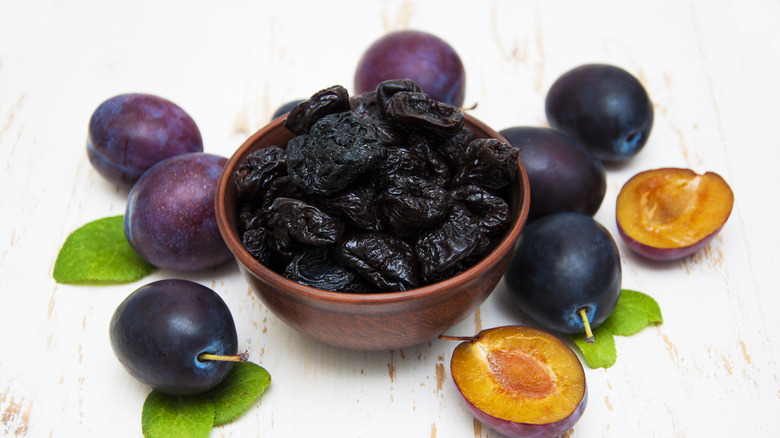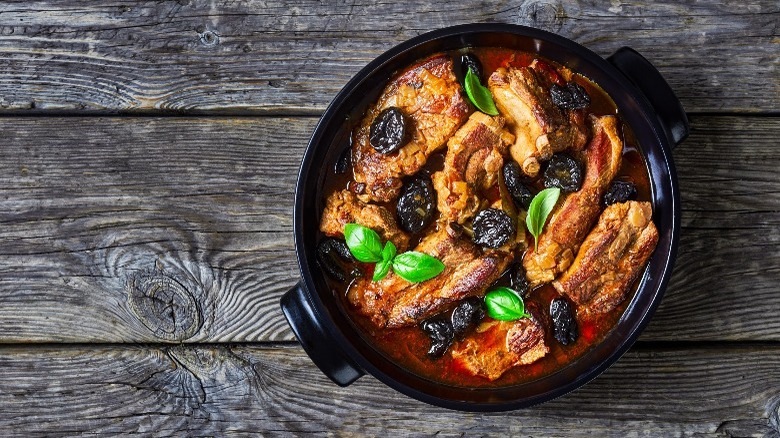When You Eat Prunes, This Is What Happens To Your Body
If prunes aren't part of your diet, it's time for you to get with the program. According to a report published by Mordor Intelligence, prune consumption was at its highest globally in 2019, peaking at 233,460 metric tons. And the International Nut and Dried Fruit Council (INC) reports that the United States is leading the way as the largest consumer of prunes in the entire world, with an average annual consumption of 47,800 metric tons.
Given our country's taste for prunes, it's therefore not surprising that California is the biggest grower and second-largest exporter of prunes in the world. However, you should know that prunes do not grow overnight; cultivating prunes requires a lot of patience. In fact, it can take a minimum of four years for a prune tree to bear fruit and up to 12 years for the tree to finally hit its full production capacity of up to 300 pounds of raw fruit annually (via INC).
As more Americans focus on health and well-being, many are turning to organic and natural foods such as prunes — or dried plums — to support digestive health. As a fruit, prunes may be known for helping in the bowel movement department, but prune eaters may also know that this chewy, sweet fruit has far more superpowers.
Why so many Americans love prunes
Shirin Hooshmand, Ph.D., professor of nutrition at San Diego State University tells Good Housekeeping that prunes have a variety of health benefits – from alleviating constipation to preserving bone health to modulating immune response, diabetes, atherosclerosis, and satiety. One serving size of four prunes has only 90 calories, along with 3 grams of fiber, zero fat and cholesterol, and loads of vitamins and minerals, including 20% of the daily value of vitamin K, which is essential for supporting blood clotting and bone health (via Harvard Health).
If you're someone who is already used to having fiber in your diet, Dr. Hooshmand recommends eating 50 grams of prunes — or roughly five to six prunes — per day. Otherwise, start with just one or two prunes per day, and then slowly add in more prunes as you go. And don't think the only way to get the benefit of prunes is just to eat them on their own. "There are plenty of different ways to enjoy the prune as part of your diet: from smoothies to salads and soups to savory dinner dishes. Prunes can even be used as a sugar and fat substitute in baked goods," Dr. Hooshmand says (via Good Housekeeping).


